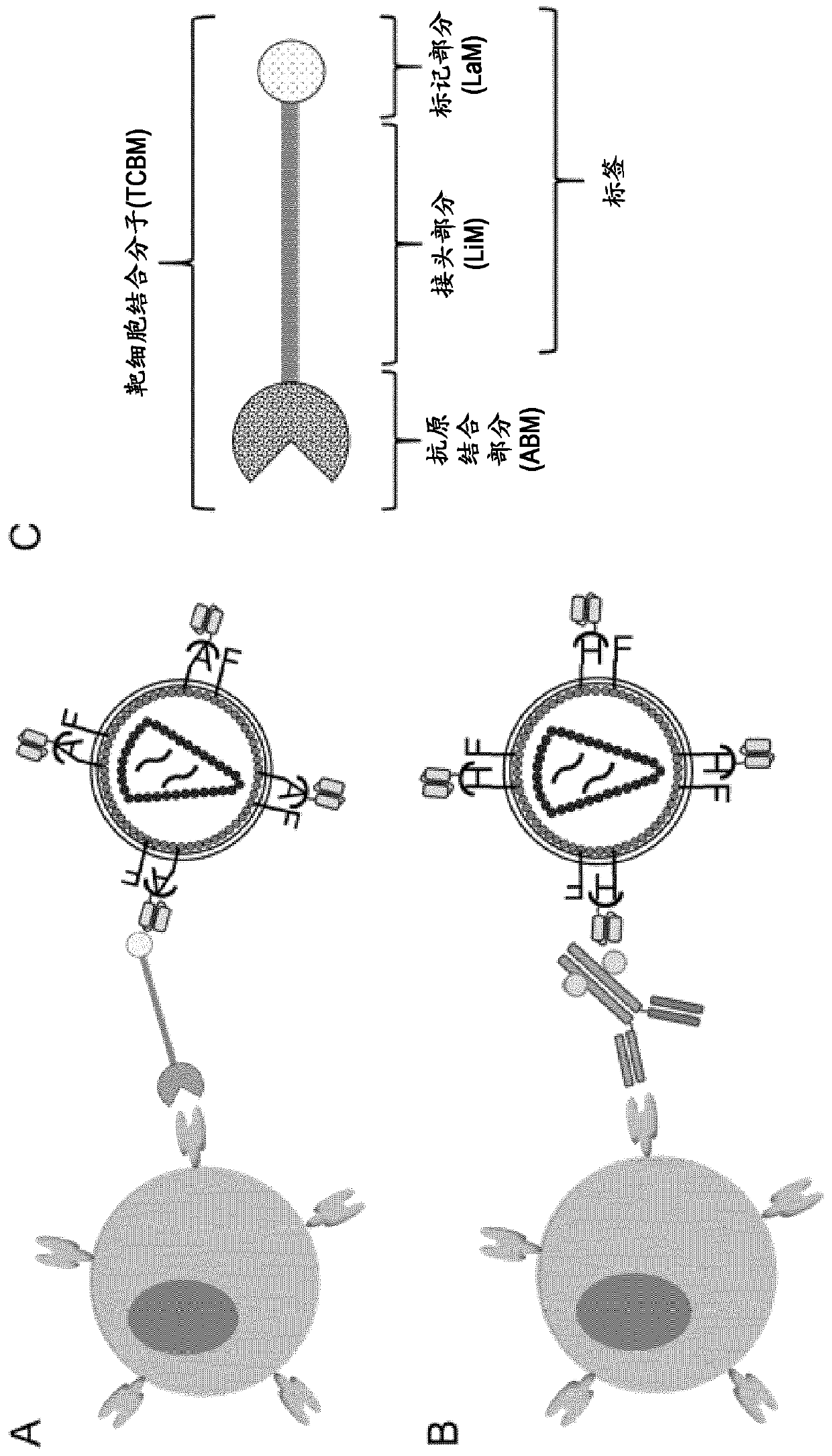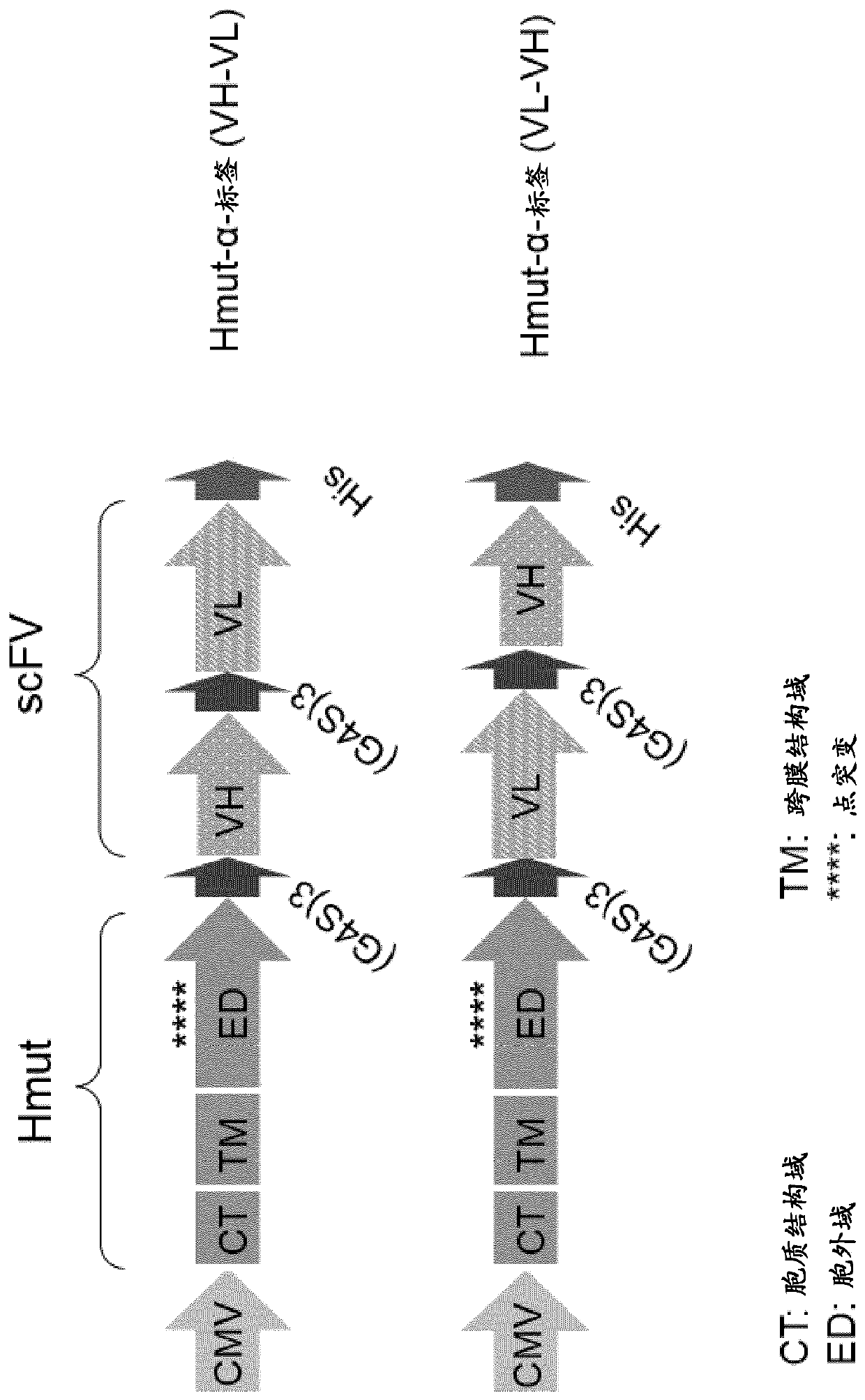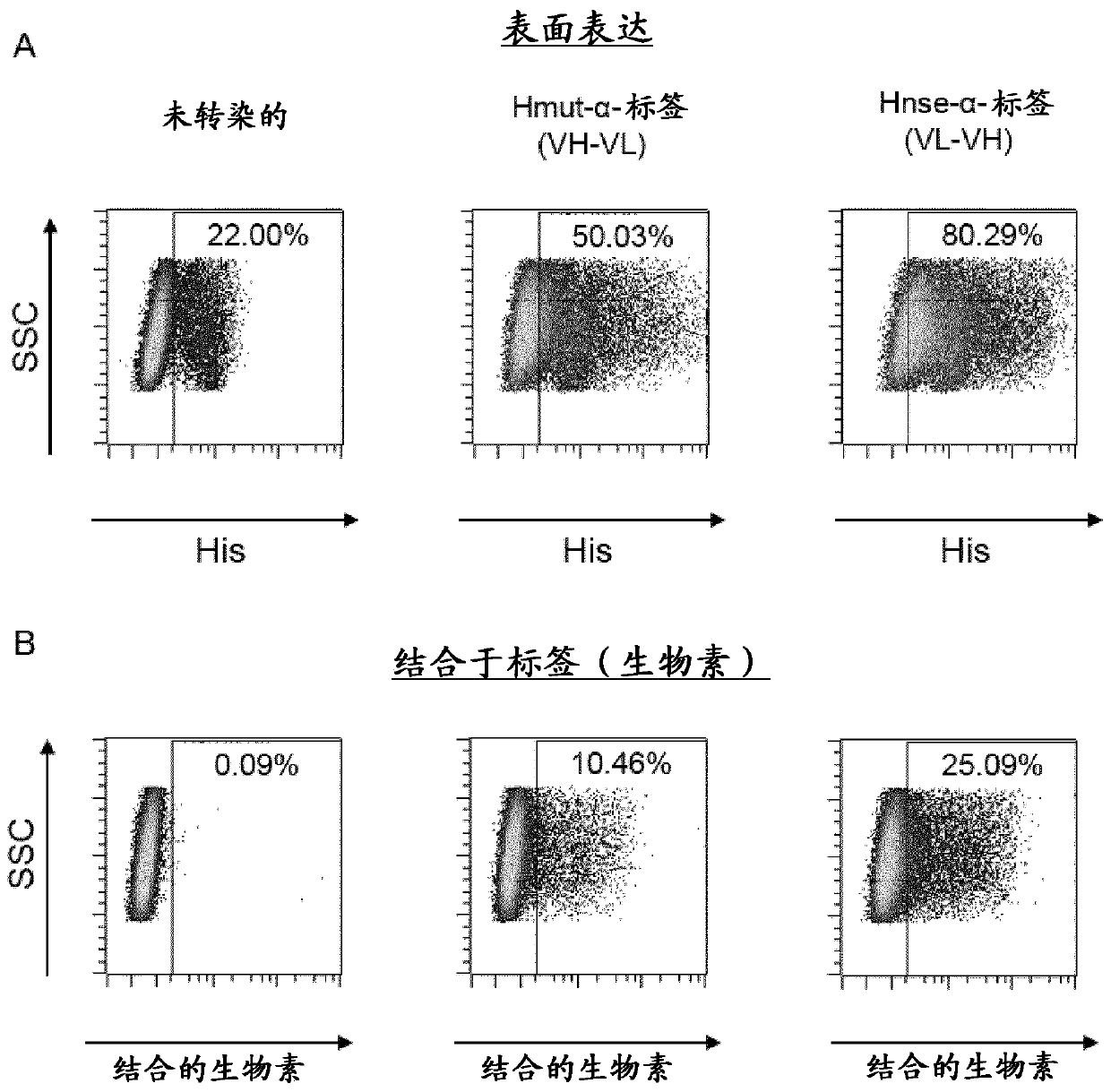Adapter-based retroviral vector system for the selective transduction of target cells
A retrovirus and target cell technology, applied in the direction of retroRNA virus, targeting specific cell fusion, virus/bacteriophage, etc., can solve the problems that the system does not provide
- Summary
- Abstract
- Description
- Claims
- Application Information
AI Technical Summary
Problems solved by technology
Method used
Image
Examples
Embodiment approach
[0172] In addition to the above-mentioned applications of the adaptive retroviral vector particle system disclosed herein or the virus-like particle system disclosed herein, other embodiments of the invention are described below without intending to limit the invention to these embodiments.
[0173] In a preferred embodiment of the adaptive retroviral vector system, target cells present in a mixed cell population with non-target cells are selectively transduced or VLP uptake is selectively induced.
[0174] In another embodiment of the adaptive retroviral vector system, the specificity of the tagged polypeptide is adjusted according to the expression level of the antigen on the target cell.
[0175] For example, using an adaptive retroviral vector system and a tagged polypeptide specific for a receptor antigen expressed at a higher level compared to the expression level of the VSV-G receptor, can be more efficiently transduced without expressing sufficient levels. VSV-G recept...
Embodiment 1
[0270] Example 1: Principles of Adaptive Retroviral Vector Systems
[0271] Antigen-binding active envelope proteins with reduced or eliminated interactions with their natural receptors were equipped with scFvs specific for biotin (SEQ ID NO: 1 and 2), clone Bio3-18E) and dextran ( SEQ ID NO: 13 and 14). For biotin-specific scFv, the principle of LLE disclosed herein can be applied (Fig. 1C), i.e., the antigen-binding domain of scFVBio3-18E has a higher priority than free biotin or biotin conjugated to other linkers. Conjugates to biotin (LaM) coupled to a 6-(6-aminocaproylamide)caproyl group or a 6-aminocaproyl moiety (LiM). LiM links biotin to the antigen-binding portion (ABM) of the target-binding molecule (TCBM).
[0272] The two chains of scFv are connected by a 3(G4S) linker (SEQ ID NO: 11) and can exist in either orientation (VH-VL or VL-VH). Orientation can affect the expression level, stability, affinity for the tagged polypeptide tag and titer of the pseudotyped r...
Embodiment 2
[0274] Example 2: Generation of tag-specific pseudotyped retroviral vectors
[0275]Pseudotyped retrovector particles specific for the tagged polypeptide tag were generated by transient transfection of HEK-293T cells. HEK-293T cells inoculated the day before in DMEM / 10% FCS (Biowest, Cat. No. 12362; Biochrom, Cat. No. S0415) in T175 flasks were treated with plasmids encoding H protein, plasmids encoding F protein, gag / pol / A packaging plasmid for rev and a psi-positive transfer vector plasmid encoding GFP were transfected. Pseudotyped retroviral vector particles were harvested 48 hours after transfection. To remove cell debris, the supernatant was collected, centrifuged at 1000 rpm for 10 min, and filtered through a 0.45 μm filter. For concentration, the filtered supernatant was centrifuged through a pad of 20% sucrose (Sigma Aldrich, Cat# 84097-250g, 20% w / v in PBS) at 5350 xg for 24 hours at 4°C. Resuspend the precipitated retroviral vector in 250 μl of pre-chilled PBS, a...
PUM
| Property | Measurement | Unit |
|---|---|---|
| diameter | aaaaa | aaaaa |
Abstract
Description
Claims
Application Information
 Login to View More
Login to View More - R&D
- Intellectual Property
- Life Sciences
- Materials
- Tech Scout
- Unparalleled Data Quality
- Higher Quality Content
- 60% Fewer Hallucinations
Browse by: Latest US Patents, China's latest patents, Technical Efficacy Thesaurus, Application Domain, Technology Topic, Popular Technical Reports.
© 2025 PatSnap. All rights reserved.Legal|Privacy policy|Modern Slavery Act Transparency Statement|Sitemap|About US| Contact US: help@patsnap.com



